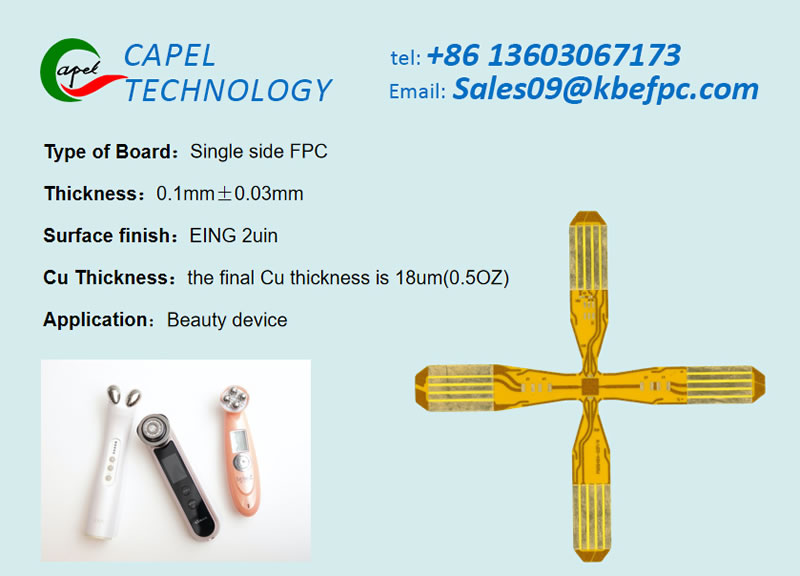Date: 2025-07-02
In the ever-evolving landscape of electronics, the demand for innovative and efficient solutions is paramount. One such solution that has gained significant traction is Rigid-Flex PCB technology. This advanced manufacturing process combines the best of both rigid and flexible printed circuit boards, offering unparalleled design flexibility and reliability. In this article, we will explore the Rigid-Flex PCB manufacturing process, the benefits of a one-stop service, and the importance of high-quality prototyping and assembly services.
Rigid-Flex PCBs are hybrid circuit boards that integrate rigid and flexible substrates into a single unit. This unique design allows for complex circuit layouts while maintaining a compact form factor. The manufacturing process involves layering flexible and rigid materials, typically polyimide and FR-4, respectively. The result is a versatile PCB that can bend and flex without compromising performance.
The manufacturing process of Rigid-Flex PCBs is intricate and requires precision at every stage. Here’s a breakdown of the key steps involved:
Design and Layout: The process begins with a detailed design phase, where engineers use specialized software to create the PCB layout. This stage is crucial as it determines the functionality and performance of the final product.
Material Selection: Choosing the right materials is essential for achieving high-quality Rigid-Flex PCBs. The combination of rigid and flexible substrates must be compatible to ensure durability and performance.
Layering: The next step involves layering the flexible and rigid materials. This is done using advanced lamination techniques that ensure a strong bond between the layers.
Etching and Drilling: Once the layers are bonded, the circuit patterns are etched onto the surface. This is followed by drilling holes for vias and component placement.
Surface Finishing: The final step in the manufacturing process is surface finishing, which enhances the PCB’s performance and longevity. Common finishing options include ENIG (Electroless Nickel Immersion Gold) and HASL (Hot Air Solder Leveling).
Prototyping is a critical phase in the Rigid-Flex PCB manufacturing process. It allows designers and engineers to test their concepts before full-scale production. A reliable Rigid-Flex PCB supplier will offer comprehensive prototyping services that include:
Rapid Prototyping: Quick turnaround times are essential for staying competitive. A one-stop service provider can deliver prototypes in a matter of days, allowing for faster iterations and design improvements.
Testing and Validation: Prototyping also involves rigorous testing to ensure that the design meets all specifications. This includes electrical testing, thermal analysis, and mechanical stress tests.
Design Modifications: Based on the testing results, modifications can be made to the design. This iterative process is crucial for achieving a high-quality final product.
Once the prototyping phase is complete, the next step is assembly. High-quality assembly services are vital for ensuring that the Rigid-Flex PCBs function as intended. A one-stop service provider will typically offer the following assembly services:
Component Sourcing: A reliable supplier will have established relationships with component manufacturers, ensuring access to high-quality parts at competitive prices.
Automated Assembly: Advanced assembly techniques, such as pick-and-place machines, ensure precision and efficiency in the assembly process. This minimizes the risk of errors and enhances the overall quality of the final product.
Quality Control: Rigorous quality control measures are essential in the assembly process. This includes visual inspections, automated optical inspections (AOI), and functional testing to ensure that each PCB meets the required standards.
Choosing a one-stop service provider for Rigid-Flex PCB prototyping and assembly offers numerous advantages:
Streamlined Communication: Working with a single supplier simplifies communication, reducing the chances of misunderstandings and errors.
Cost Efficiency: A one-stop service can often provide better pricing due to reduced overhead costs and bulk purchasing of materials.
Faster Turnaround Times: With all services under one roof, the time from design to production is significantly shortened, allowing for quicker market entry.
Consistent Quality: A single supplier is more likely to maintain consistent quality across all stages of the manufacturing process, from prototyping to assembly.
Kaboer manufacturing PCBs since 2009. Professional technology and high-precision Printed Circuit Boards involved in Medical, IOT, UAV, Aviation, Automotive, Aerospace, Industrial Control, Artificial Intelligence, Consumer Electronics etc..